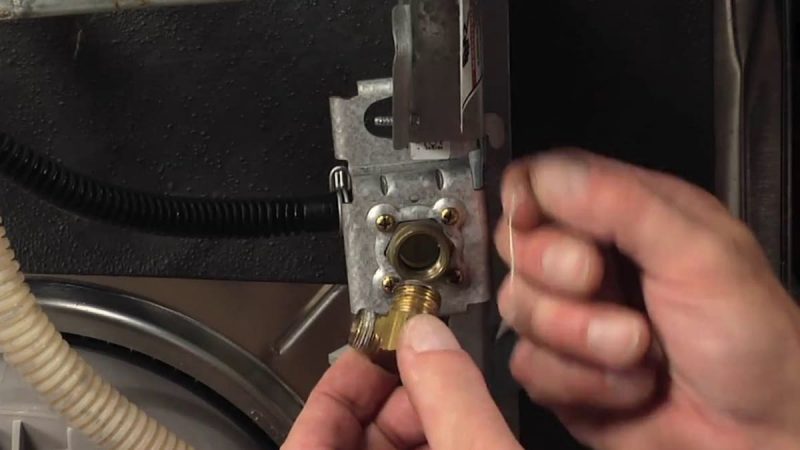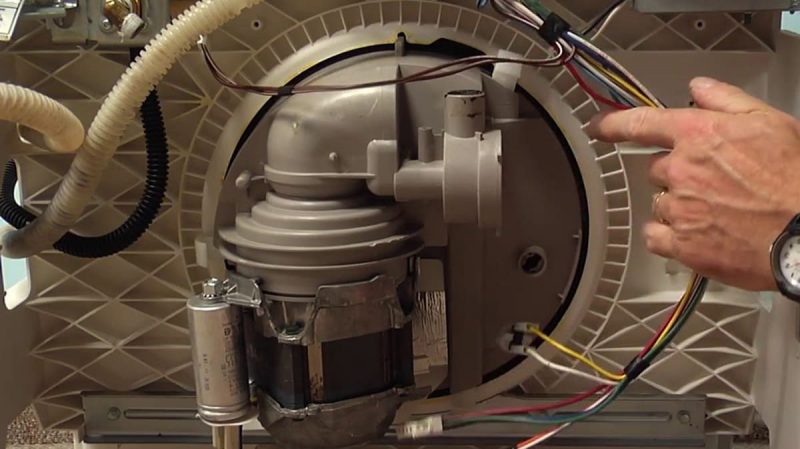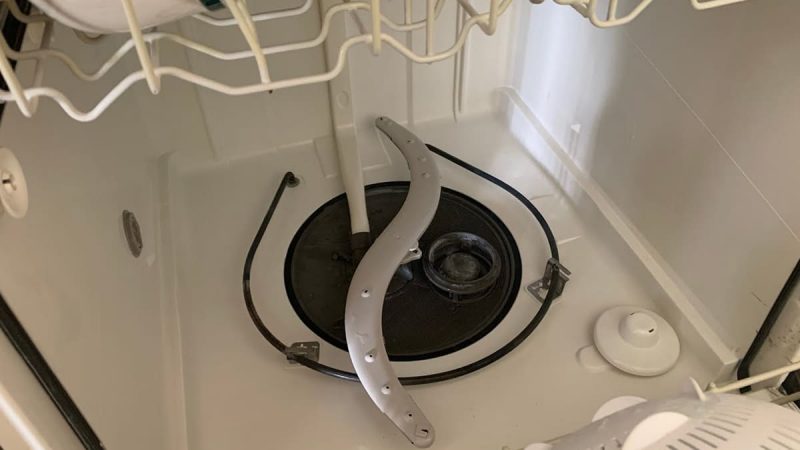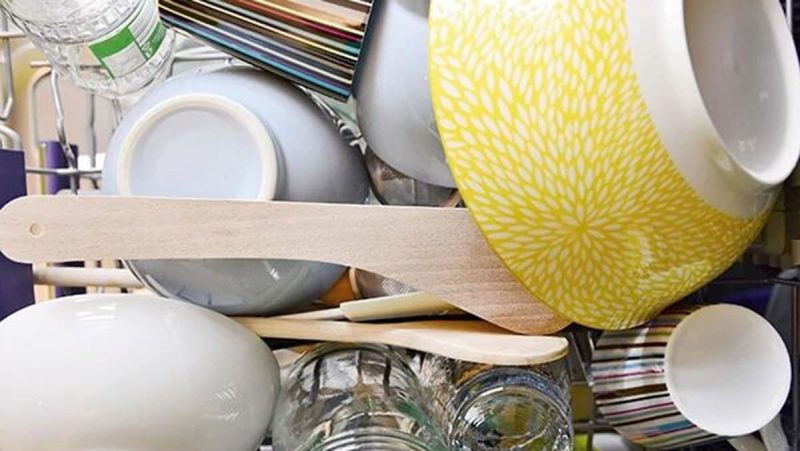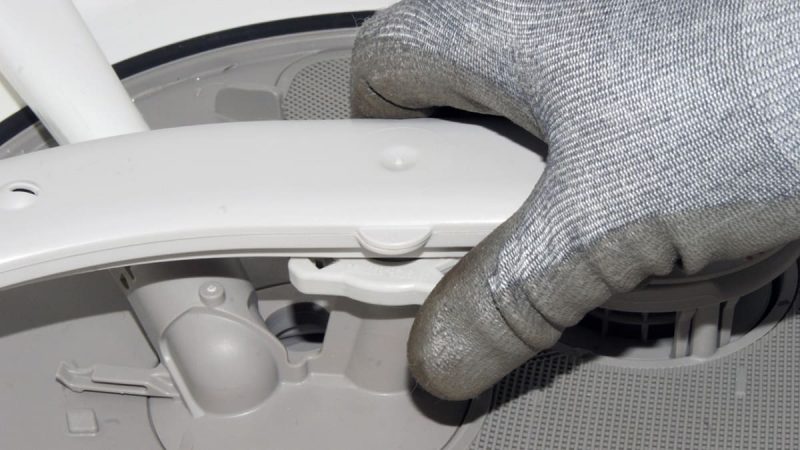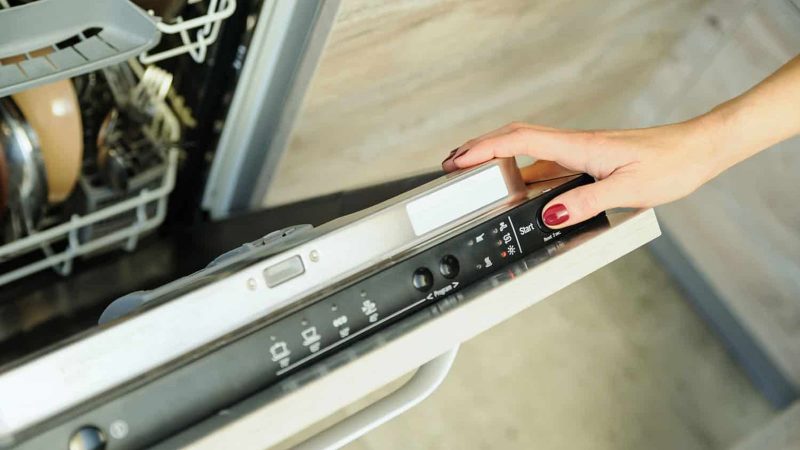If your dishwasher has stopped working, you need to check the circulation pump, water inlet valve, filters and sprinklers. They are most often the causes that cause problems in the operation of household appliances.
Other common causes of dirty dishes are: incorrect loading, insufficient program power, nozzles blocked, incorrectly installed filters.
Read more about the reasons why the dishes are dirty
The first thing you should do is change the position of the dishes inside the machine and make sure that the correct program is selected. If this is not the problem, pay attention to the inlet valve, circulation pump and filter.
Faulty water inlet valve
In order for the machine to work flawlessly and the dishes to be 100% clean, there must be enough water inside. The water supply is controlled by an element called the inlet valve. If you notice that the dishes are not being cleaned well or of insufficient quality, pay attention to it. It can fail both mechanically and electrically.
There may be no electrical continuity inside the valve. This means that the signal from the control board does not reach it, and it does not open.
Mechanical failures are associated with corrosion and mineral deposits. The valve is stuck in the closed position and water cannot get inside the dishwasher.
The valve is not repaired, it must be replaced. To get to it, you need to tilt the machine back, then unscrew the retaining screws, remove the water and power connectors.
Faulty circulation pump
Dishwashers are programmed for maximum water savings. Therefore, during the washing cycle, it is reused, after passing through the cleaning system – filters installed inside. A special pump is responsible for the circulation of water.
When the circulation pump breaks, the water inside the machine stops being redistributed, causing the dishes to remain dirty.
The circulation pump is located at the bottom of the dishwasher, to gain access to it, you need to tip the machine on its side, remove the bottom panel, and then disconnect the bolts, clamps, pipes, power connectors, etc. The pump is quite large and is in plain sight.
Clogged filter
The Kenmore dishwasher, like, in fact, any other, has a filter. It is located at the bottom, in the pallet. It effectively removes food particles from the water during the washing process, so that it circulates in a circle and is reused several times.
In order for the washing quality to be high and the performance of the machine to be maximum, the filter must be cleaned, ideally after each cycle. It is enough to remove large particles and rinse it under running water.
Incorrect replacement of the filter may reduce the performance of the appliance and damage dishes and utensils.
When the filter is clogged, the water flow is restricted. Without its normal recirculation, high-quality cleaning of dishes is impossible. To remove the filter, remove the lower basket and unscrew it, then rinse and reinstall.
The dishes in the upper basket are not cleaned, the reasons
If you notice that items in the upper basket are no longer being cleaned, it is most likely that the middle or upper wash arms are damaged or clogged. Also, the cause may be high items loaded in the lower basket.
Damaged washer sleeves
The Kenmore dishwasher is equipped with sprinklers that are located between the racks and in the middle. Before getting there, it passes through the washing sleeves. Thanks to the sprinklers, water is evenly distributed over the surface of the loaded dishes, effectively removing dirt. At the same time, the spray arms rotate, due to which the maximum effect from cleaning the dishes is achieved.
Fragile and light dishes should be loaded into the upper basket, for example, glasses, cups, saucers, bowls, etc. At the same time, they should be positioned so that they are not moved by water flows.
A clogged or broken spray arm will not spray water properly, resulting in dirty dishes at the end of the wash cycle. Therefore, you need to fix this issue. To do this, remove the damaged sprinkler and carefully inspect it. Take a toothpick and remove the blockage in all holes. If the device is damaged, you find cracks or breaks on it, it will have to be replaced, since such defects cannot be repaired.
Incorrect loading of dishes
There are certain rules for loading dishes and they must be followed. All of them are described in the user manual. If tall items are not properly loaded into the bottom shelf, they will block the rotating middle spray arm tub, preventing it from turning and cleaning dishes placed in the basket.
The problem is solved simply – you need to distribute it so that it does not block the work of the sprinkler. Place trays and lids on the edges of the rack. Do not place plates larger than 19 centimeters in diameter near the dispenser, as it may not open.
Rules for placing dishes:
- Glasses, cups, pans – upside down.
- Deep plates and pans – at an angle.
- Place cutlery in a stable position so that it does not tip over.
- Any utensils are placed so that the sprinklers are not blocked.
- Items are not placed inside each other.
- Small fragile items are placed in the upper basket, the rest – in the lower basket.
Do not overload the machine and follow the manufacturer’s instructions, then household appliances will work for a long time and correctly.
The dishes in the lower basket are not cleaned, the reasons
As in the previous case, dirty dishes in the lower basket can be caused by a blockage in the lower wash arm. But wrongly loading the basket and overloading it will lead to the same result.
Clogged or damaged lower wash arm
Once the lower sleeve is clogged, the items loaded into the basket are no longer cleaned effectively. Clogged holes can be cleared with a toothpick. A damaged lever must be replaced.
Incorrect loading of dishes
If the dishes are loaded incorrectly, there is a chance that they will remain dirty after the cleaning cycle is completed. The detergent simply will not get on the surface of some items placed inside.
So, to solve the problem, distribute the dishes in a different way, following the rules described above, or look at the instruction manual and follow the manufacturer’s instructions. Leave enough space between items.
Restarting a Kenmore dishwasher
If the operation of the machine is accompanied by the appearance of errors, it can be restarted. The same must be done after eliminating any causes of its incorrect operation.
There are 2 ways to restart the dishwasher:
- Disconnection from the power source.
- Activation of the diagnostic mode.
In the first case, remove the plug from the socket, having previously turned off the machine using the control keys. Wait 5-10 minutes and reconnect your home appliances to the mains. Use the machine in normal mode.
In the second case, enter the diagnostic mode to start automatic testing of the operation of all elements of the equipment. Once completed, the machine will reboot.
Starting diagnostic mode
There are several combinations that will help you start the diagnostic mode. Choose the one that suits your dishwasher model. You will always find the exact information in the instructions.
- Click on the “Heat Dry” button, then press the “Normal” button. Then repeat the procedure.
- Click on the “High-Temperature Wash” button, then press the “Air Dry” button. Repeat the procedure twice.
Hold down any three keys. It might work. As soon as this happens, automatic testing will begin, after which the equipment will reboot.
Draining water from the machine
Before carrying out certain measures, it is necessary to drain the water from the machine. This can be done by holding down the “Cancel / Drain” key in the middle of the cycle. After that, the water will merge within 2 minutes.

